|
There are a few of reasons why certain trees are special to me for climbing. Sometimes it is for the connection I feel to the tree, a particular challenge it may present for climbers, or because it provides an experience unique for those who head into the treetops. I am often asked if I have a favorite tree to climb. It's hard to narrow it down to a single tree, but here are four of them and what I enjoy about them. Each year I select a number of these favorite trees for our Treetop climbs (Open, Open-Advanced, Adult, and Girl Scout Open Climbs). Here's why they are special to me and may help you decide if you'd like to climb it with us. Pearl 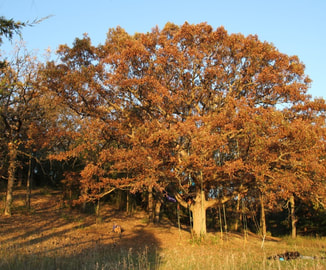 Pearl in fall Pearl in fall Pearl is one of my favorite trees. Growing at the base of a ridgeline formed during the last glacial period, this white oak is one of the older trees in the stand of oak & hickory overlooking the restored prairie. While understory plants have filled in the oak savanna that stretches the length of the ridge, park management is returning the area to the splendor of the natural savanna and prairies common to southeast Wisconsin in it's pre-settlement days. (Pearl is our climbing tree in Mukwonago Park) Having grown in open sun in its younger years, Pearl has developed a broad spreading crown with numerous large branches, an eye-catching form, and a broad trunk that is firmly rooted in the fertile soil. The number and span of the branches are part of what make this tree an enjoyable one to climb. There are several branches to explore and plenty of comfy spots to lay your head back and enjoy the hours pass by. 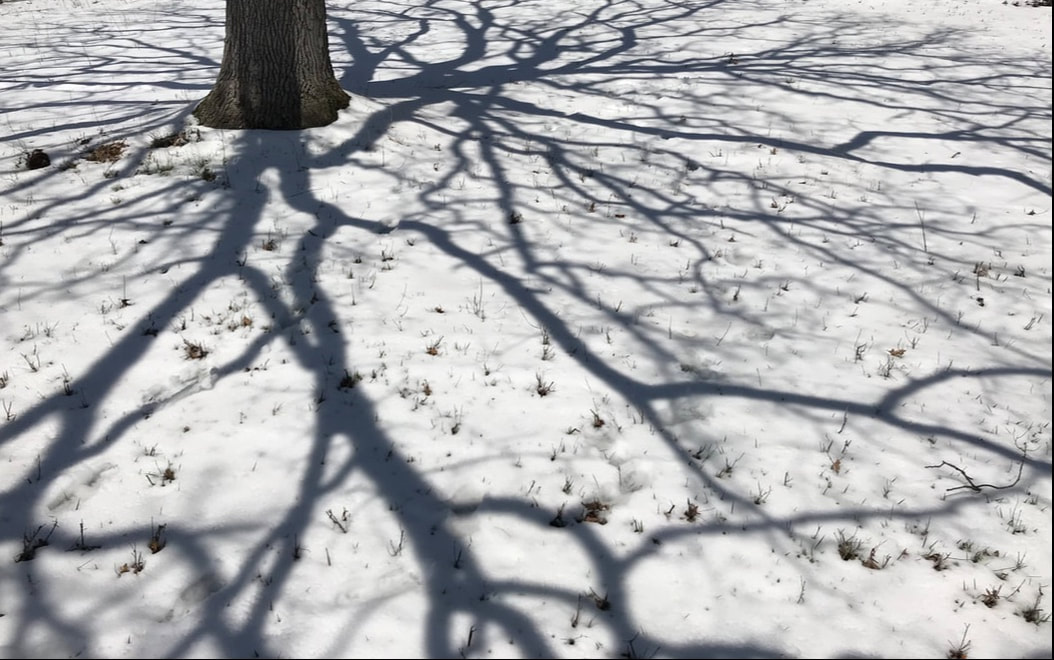 Pearl branching structure Pearl branching structure Taking time to look at the other mature trees along the hillside surrounding you, you can still make out the structure of the savanna before the understory and invasive plants crept in. Climbing late in the day may provide the opportunity to enjoy the rays of the setting sun. Winter climbs are a treat when the sun casts shadows of the weaving branches on the ground below. After taking time to play in the branches, you can head to a special place at the top. A fork in the branches at the very top form a small cradle that you can stand in, placing your head within feet of the uppermost leaves. Looking south, an opening in the branches provides a window where you can take in the view of the horizon. That is one of my favorite places to be in Waukesha County. The Woodfield Oak Since first meeting this tree in Woodfield Park after moving to Waukesha over 20 years ago, I have returned regularly to sit in its shade. It has often served as a place to quiet my mind and enjoy my lunch break. The form reminds me of the live oaks that grow in the Southeastern U.S. with their sprawling branches. It is about 55 feet tall and the branches reach out about 85 feet from tip to tip! Two large lower branches scoop down to the ground, ready to embrace you like outstretched arms. It is a special tree…and why I have not found the right name for it yet! The tree is upwards of 200-225 years old. Having sprouted from an acorn in the late 1700’s to early 1800’s, this tree was already a modest sized tree by the time Wisconsin became a state in 1848. With broad spreading horizontal branches, this tree is a favorite amongst climbers as they allow for long limb-walks and great for taking big swings on your rope. Since peoples’ comfort with heights varies, I love introducing students and public climb participants to the tree as there are great branches to practice skills or play from 7 to 40 feet above the ground. As the crown spreads and trunk heads towards the sky, two main stems form to provide a pair of high points in this tree. Reaching the top of either one, you will find yourself standing with your head near the uppermost leaves of this amazing tree. Captain Tony Fox Brook Park features a number of beautiful bur oaks & our particular climbing tree grows near the bank of the lake. Captain Tony is a great tree, providing shady branches to get out of the summer heat and enjoy refreshing views of the swimmers and kayakers on the lake below. With an upright trunk that forks into a few limbs, there are some great spots where you can pause and explore. Some of the branches allow for swinging and a taste of moving about the branches. 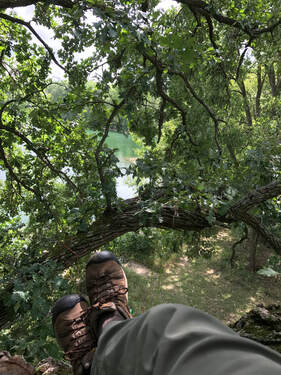 Kicking back in Captain Tony Kicking back in Captain Tony Captain Tony has a nice trunk route, which is when your climbing rope hangs down alongside the trunk. I enjoy trunk routes because I can touch the large limbs, feel the bark, and form a closer connection to the tree. For many climbers the challenge presented by being against Captain Tony's trunk may prevent them from making it past a particularly tight spot on the way up. Those who are able to adjust their ascent technique, use the trunk to their advantage, or able to persevere with determination are able to get past this point. Once above it, you are rewarded with a chance to stand at the point where the large limbs begin to form the crown. Standing there, energized and beaming with satisfaction, you will look up to find a clear route to the top. Watching others successfully make it past that difficult spot and seeing them beam with pride for the accomplishment is a highlight of the day for me. A Boost Up It is not always about finding the tallest tree to climb. Most of the time I am looking for an experience or something unique a tree may provide. The swamp white oak in Horeb Spring Park is a pretty tall tree for our area, but where it is growing provides something that all climbers can experience regardless of how high we like to or are able to climb. The tree grows on a hillside that makes for a popular sledding spot in winter. From spring through fall, this slope presents a unique experience for our climbers. As soon as your feet leave the ground & you are hanging on rope, the slope is no longer a concern for you. What it does do for a climber is change your perspective of height depending on the direction you are facing. Facing up-slope you can see the ground and may not feel anything different than when climbing trees on level ground. As you rotate and the view down the hill comes into your field of vision, you feel an interesting sensation of being higher than you actually are. 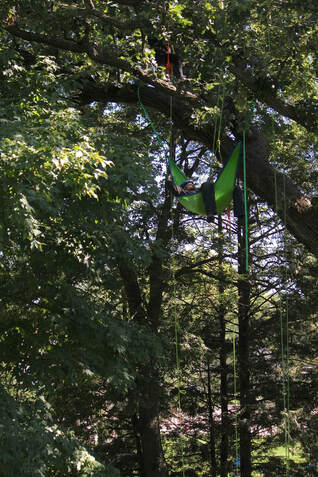 Hammocking at 20feet with the sensation of being about 40 feet from the ground Hammocking at 20feet with the sensation of being about 40 feet from the ground With trees growing at the bottom of the hill, when you look directly across to them you will be peering into higher points of those trees. Your senses will make you feel that you are just as high in your own tree. That sensation paired with the fact that you can still climb high in this tall tree will you give a boost of energy and allow you to check your comfort with heights. The sensation of feeling higher than you are is due to your orientation relative to the surrounding trees and landscape. This is something I look for when heading out to climb trees in the forest. Walking a ridgetop, I don’t necessarily need a tall tree, I just need a tree that can provide a view over or between the tops of the trees downhill. We often drive or hike to cliff tops to enjoy the view. With rope and saddle in hand, I just need to find a good tree on top of a ridge, cliff, or hill to get that extra boost above most people's perspective.. (Note: some of the experiences and climbing techniques described above may not be available at all Treetop climbs. Advanced techniques like limb-walking or multi-pitch climbing to get to the very top are covered in our Learn-to-Climb classes and introduced with modifications in our Open-Advanced climbs. Open Climbs feature a hammock.)
1 Comment
Name: Captain Tony Species: bur oak Height: 55 ft Trunk Diameter: 3ft 2in Spread of Branches (tip-to-tip): 55 ft Approximate Age: 100-150 yrs It seems every time I visit this tree I am treated to a wonderful encounter. Approaching this tree in the morning provides the opportunity to watch the foggy mist rolling across the lake. The soft wisps have a calming effect on my mood. I often take pause during my morning climb preparation to appreciate the beauty and song of a pair of loons on the water. As the sun begins to rise, I am energized by the rays of light shining through the mist and their wonderful reflections in the branches above.
One particular summer day, I climbed into this wonderful oak to take time for myself. I went up there to enjoy the view across the water and lay back on a branch shaded from the leaves above. Being a rather warm and humid day, a song came into mind; “I went down to Captain Tony’s to get out of the heat.” You may recognize the lyric from a Jimmy Buffett song where he sings of the man and saloon in Key West. For a brief moment, I was back in the Keys heading in for a break from the sun and heat. It was at that moment this tree became known to me as, Captain Tony. Trees are living beings and I am often moved to formally recognize certain individuals by name. The name is not so much a tribute to a person or place; but, to the emotion, feelings and reflections I experience when in the presence of this tree. 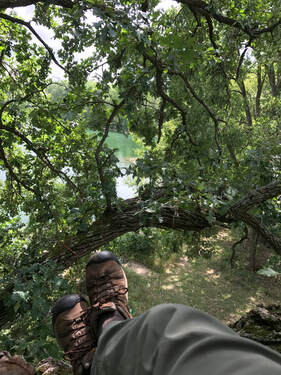 With over 50 species of oak in North America, bur oaks are known for their impressive branch spread and trunk diameter. Living in Wisconsin provides us the opportunity to appreciate large bur oaks on a regular basis. The largest bur oaks have branches reaching 100 feet across and trunks close to 9 feet wide! Wisconsin’s largest known bur oak has a trunk over 7 feet in diameter and is located in Waukesha County. Walking around Fox Brook Park you are able to appreciate a number of large and majestic bur oaks. Each has their own presence about them and worthy of taking time out of my day to stop and appreciate. Captain Tony is a little more modest in size yet extra special as I have spent time in his branches. Those of you who have climbed Captain Tony may know what I am talking about as you have your own memories and connection to the tree. This tree touches people in different ways, so I am excited to offer a variety of experiences this year. Should you like us to introduce you, we will visit the tree on numerous occasions in the year ahead: Adult Tree-Time, Rec Climbs, Open Climbs, Girl Scout Adventure Climbs. Our climbing club will also have the opportunity to explore the canopy and enjoy hammocking! Statistics Name: Georgia Oak-eeffe Height: 85’ Trunk Diameter: 34” Spread of Branches: 65’ Approximate Age: 50-70 years About the Tree At one time, the world’s largest known pin oak was right here in Wisconsin. It was growing on the campus of UW Stevens Point since 1894, but was removed in 2017 after being infected with the lethal oak wilt disease. During its 123 years of life, it had reached 92 feet in height with the trunk being over 4 feet wide. Pin oak is somewhat unique in its tendency to exhibit a strong central trunk rather than the sprawling nature of other oaks. This form, paired with a relatively fast growth rate, leads them to attain impressive heights within their short lifespans compared to other oaks. Our climbing tree in Sun Prairie is the only pin oak in our current line-up of climbing trees. This tree is surrounded by a handful of other impressive pin oaks and I encourage you to come out and meet them during one of our climbs. 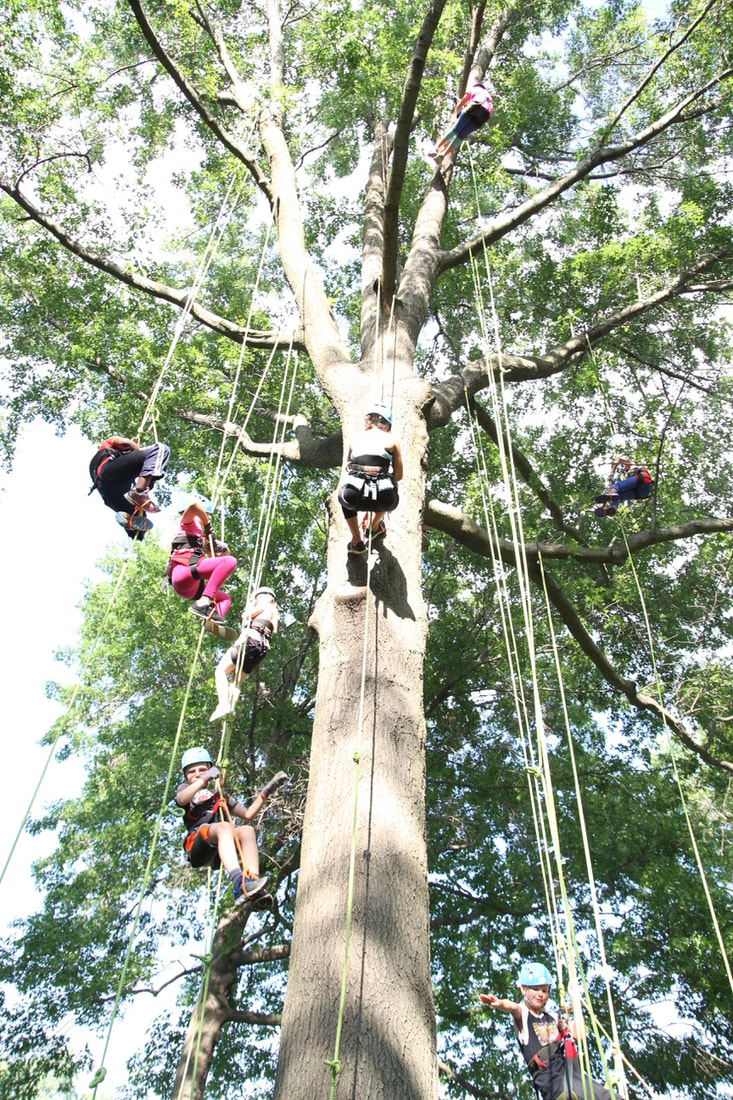 The scientific name (Quercus palustris) comes from the Latin word for marsh, palus, indicative of the habitat where it is typically found in nature. The species tends to grow in lowland areas of the Midwest states, however, it can be grown across the continental U.S.
Having the ability to tolerate pollution and compacted soils, pin oak has been one of the most widely planted oaks in urban landscapes. Before you decide to plant this tree however, beware that the tree can face nutritional issues when growing in clay soils. Starting my career in Missouri, I was fortunate to work with pin oaks that reached 100 feet in height. Since the species tends to hold on to its dead branches and twigs, I spent a lot of time in these magnificent trees.  Statistics Height: 80’ Trunk Diameter: 34” Spread of Branches: 55’ Approximate Age: 60-90 years old About the Tree You are likely familiar with black walnut on some level. It produces a high-quality wood with beautiful coloring and grain patterns. You might not know that it has the ability to use chemical warfare to hinder nearby plants from competing for valuable soil resources. The husks can be used to make a brown dye for fabric. The largest known walnut in Wisconsin is near Dousman. This tree has been crowned current champion, in part due to reaching 100 feet towards the sky and sporting a trunk of 34" in diameter. My appreciation for eastern black walnut trees really took hold while living in Des Moines, Iowa. Walnut Woods State Park is home to one of the largest natural stands of black walnut. I spent time camping and hiking amongst these glorious trees. I would spend afternoons sitting on the bank of the river, watching the water flow by as I snacked on freshly fallen walnuts. Walnut’s strong wood and branching structure make them a fun tree to climb. Our climbing tree in Cutler park in Waukesha has a tall trunk with the crown sitting high above the park. As you ascend alongside its trunk, you can enjoy an open view across the park and appreciate the changing perspective that comes with height. This tree hosts one of the highest climbing routes of all of our climbing trees. While most trees enable climbers to reach 30-40’ regularly, climbing to the top of this tree’s high route will have you sitting 50 feet above the ground. This tree stands tall and proud, observing silently from a distance, the many social gatherings taking place in this park at the heart of the downtown. Live music is enjoyed through the summer months, including one special weekend in June. One Sunday in June, the Carl Zach Cycling Classic rolls into town. Waukesha is one of the 11 stops in 11 days of the Tour of America’s Dairyland, the largest competitive road cycling series in the U.S. With a day full of races and a climbing tree situated along the course, climbers have the best view of the bikers racing by!
With many reasons to appreciate this tree, it is a real pleasure to be able to greet it daily as it stands across the street from our new office location. This location provides the foundation for great things to come, including our tree health classroom and tree climbing gym/training center. Stay tuned for more announcements! Statistics Height: 85’ - Trunk Diameter: 34” (just under 3’) - Spread of Branches: 75’ State Champion: The largest known silver maple in the state may only have height and crown spread dimensions slightly larger than this tree, but its trunk diameter measures over 5 feet! About the Tree In the center of Firemen’s Park in Germantown, this tall silver maple grows amongst an assortment of other maples. Like many silver maples, the tree has developed a vase-shape form with large limbs reaching towards the sky. This form is what makes this a fun tree to climb. It has few leaves throughout the center of the crown, which means you have a wonderful view beyond the tree when sitting high in the branches. The open structure can make you more aware of the height above the ground as well. For most people, looking down to the ground feels like you are sitting higher than when standing on the ground looking up. Because of this, the energizing sensations associated with heights is enhanced.
Once on rope, this tree entices most climbers to try swinging from branches and flipping upside down! About the species The common name refers to both the silver color on the underside of the leaves as well as the characteristic bark. Saccharinum, the scientific name of the species, is derived from the Latin word for sugar. The sap can be used to make maple syrup. Before you try it however, know that its sugar content is about ½ that of the sugar maple. You will need far more sap to produce reasonable quantities of syrup for your pancake breakfast. If you have experience with silver maples in your own landscape, you may not think very highly of the tree because of the numerous ‘helicopter’ seeds and twigs that fall throughout the year. Their growth rate allows them to provide shade in relatively short period of time, but can also lead to outgrowing their space in most landscape situations. Silver maples get large, some reaching over 100 feet tall and nearly 100 feet from tip to tip. They grow impressively below ground as well, developing a root system that reaches 2-3 times the height of the tree! It can utilize distant water sources to sustain growth even when growing in drier soils away from their native habitats near rivers and streams. When you consider the spatial needs of silver maple above and below ground, you quickly realize that many urban and suburban landscapes do not provide adequate space for the species. Despite the negative stigmas associated with the species, I am not afraid to say that I like silver maples. Then again, there aren’t many tree species I will proclaim as to not like! Our climbing tree in Germantown has taken advantage of the room it has been provided, and therefore is developing into a mature tree that can be appreciated and enjoyed for many years to come. 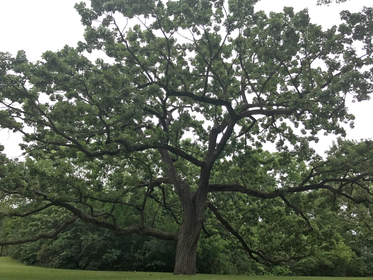 Statistics Height: 55 ft Trunk Diameter: 46” Spread of Branches: 85 ft Approximate Age: 175-225 years old About the Tree
This tree stands alone in a remote area of the park. With the spread of its branches a lot wider than the tree is tall, its long, swooping branches are like embracing arms. A few of these branches swoop to within feet of the ground, so it is easy to climb onto the lowest branches even without rope. When I stand back and look towards the crown of a tall tree, I see a quiet retreat. Rope and saddle allow me to span the gap between the ground and the crown. It can feel like visiting another world -- one that very few people will ever visit. Climbing into the branches is how I really connect with a tree. It’s like being the “heart center” of the tree. In the case of this beautiful bur oak in Woodfield Park, the crown begins just 6ft above the ground. Walking up to this tree under its sheltering branches, you can feel its energy radiating. It is peaceful to simply lay beneath the tree and stare up through its branches. I can spend hours sitting at its base and reading a book. We pass by numerous trees during our day. Most of them seldom receive a second glance from the people walking by. Other trees stand out and might even become a good acquaintance. This tree is one of those trees that has a character all its own. For me, this tree is a personal friend. I love to introduce people to this very special tree. I use the tree in our 2-day learn-to-climb classes. I enjoy aerial yoga in silks suspended from the branches. You have the opportunity to climb this tree in our Treetop hosted climbs (Open, Adult, Girl Scout Adventure, Private/Group, Climbing Club). 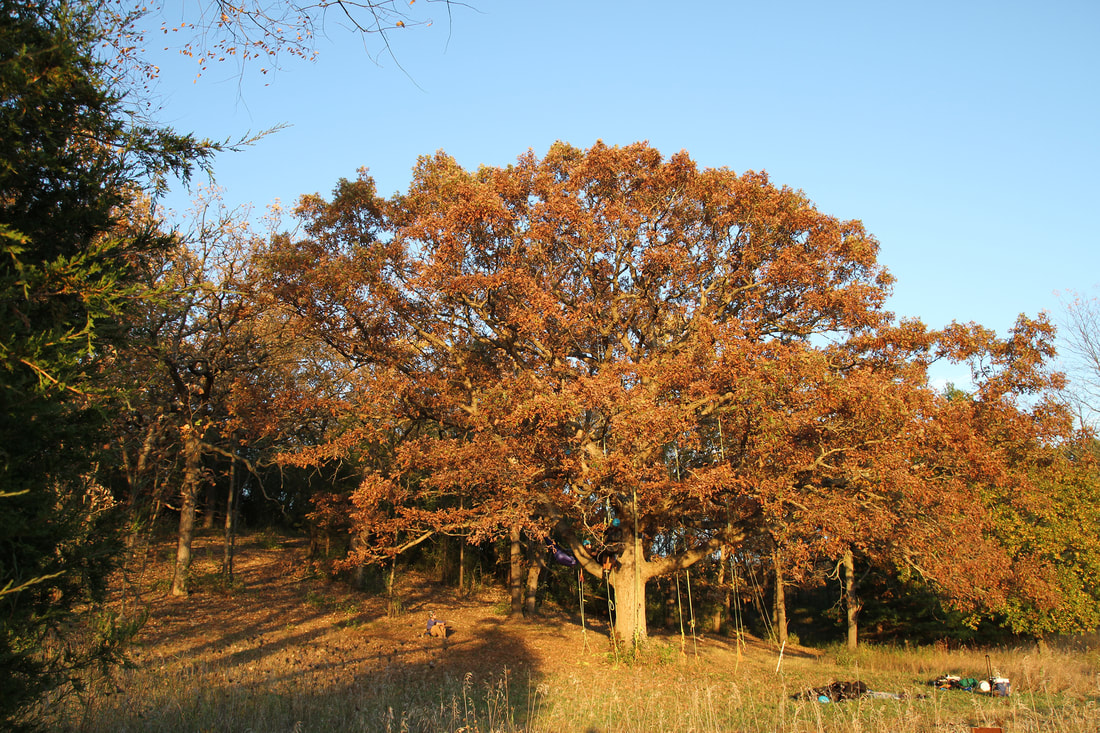 Statistics Name: Pearl Height: 50 feet Trunk Diameter: 33 inches Spread of Branches: 70 feet Approximate Age: 100-150 years old 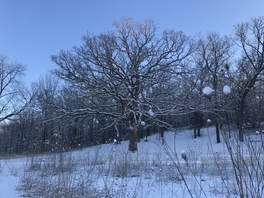 About the Tree Pearl is a beautiful white oak standing in the transition area between the forest and prairie. With plenty of sunlight, it has formed a full canopy with numerous branches for us to play in! Pearl is an enjoyable tree to climb for a few reasons. With the large number of branches, there are many places to sit, stand, lay back on, and one of my favorite places to enjoy the sunset. Whenever you climb a tree on a slope, it enhances your height perspective. You feel even higher than you are as the landscape stretches off beneath you. With Pearl, the view southwest across the prairie is particularly enjoyable as the suns sets lower during our late afternoon climbs. Located in Mukwonago Park, Pearl is a popular selection for our private climbs for scout groups and family adventure weekends. The park has a lot to offer… a lake for fishing, an archery range, a dog park, camping and hiking. As one of the Waukesha County Parks on the outskirts of Metro Milwaukee, It’s a great place get-away without having to drive too far. State Champ for the species: The largest known white oak in Wisconsin at this time also grows in Waukesha County. This current champion stands 115’ tall, has a crown spread of 85’, and trunk about 66” (almost 5½ feet wide!). The vigorous growth of the tree indicates it is still in its prime, especially when you consider bur oaks can reach 300-400 years of age.
The size of this tree makes it a stand out when looking at bur oaks. Having its upper branches reaching over 70 feet high and spreading over 90 feet across puts this tree in a unique class of the largest bur oaks in Wisconsin. However, with a trunk that measures about 4 feet wide, it is rather slender if you compare it to the champions that have trunks 6-7 feet wide! This large tree and its smaller hickory companion, stand prominently in the City of Waukesha’s Fox River Parkway north park. It is a photogenic tree that dwarfs climbers amongst its branches. It is an incredible experience to spend time in its branches. Once you climb over 20 feet, you are able to peer over the shrubs and small trees that border the park and obscure the distant views for people back on the ground. The park is surrounded by the Fox River wetlands, with fields of reeds and grasses stretching to the south. While you enjoy a quiet and peaceful rest in the branches, you can watch the river flow gently by on its way to the Illinois River, 200 miles away. Being able to climb over 60 feet is a neat experience for seasoned climbers. There are also plenty of large branches to lay your head on and stare skyward. Often times when we climb trees, we look down to appreciate the height we are sitting at. But it’s also really cool to look UP, and really appreciate the scope of the tree. It’s structure and size. It’s sprawling branches forming somewhat randomly. Knowing that this large, living thing grew from just a tiny acorn. This is one of the largest trees we climb in our Rec Climb programs. We’ll return to its branches on Friday, July 13th. You can join us by registering through the Waukesha Recreation Department. State Bur Oak Champ: The current known champion bur oak in Wisconsin grows outside of Dousman. Standing nearly 65 feet tall, it is just shy of the Fox River Parkway oak’s height. However, the tree’s double forked trunk measures an impressive 7 feet across! Two of the most amazing trees you could ever hope to meet are General Sherman and Methuselah. In the same day, you can visit both the largest tree and the oldest tree on the planet.
The General Sherman tree stands prominently in the Giant Forest in Sequoia National Park. Methuselah grows about 70 miles to the north, in the Ancient Bristlecone Pine Forest. General Sherman is a 2,000 year old sequoia that reaches 275’ towards the sky.. It is the largest known tree on the planet, measured by volume. You may find it difficult to reach the first branch, given it emerges at 130’ above the ground. To put this in perspective, there are only a few trees in Wisconsin which surpass 150’ in height. It is very likely every tree you have come across in Wisconsin would not even reach the General Sherman tree’s lowest branch. With a trunk diameter of 36' across, the footprint of its trunk covers almost 1,000 square feet. How does that compare to the size of your house? Methuselah is about 4,850 years old, yet stands less than 50’ tall. The other measurements don’t mean much when you allow its age to sink in. The Pyramids of Giza were built around the time Methuselah was turning 500 years old. What’s more, there is another bristlecone pine recently found to be about 5,060 years old. I have spent most my life visiting and interacting with trees, but the time I spent in the midst of particular trees is an experience I will never forget. These trees are in a class all to themselves. It’s as if they come from a different world and another time. There are other impressive trees to meet around the world, but we are fortunate to have incredible trees that are a little more accessible to us. Trees of Wisconsin The trees and forests of Wisconsin were cleared for agriculture or heavily logged in the late 1800’s and early 1900’s. Trees and forests are also removed for development and growing population. This means that the vast majority of the trees we come across today are less than 150 years old. For that reason, it is a pleasure to enjoy trees which pre-date European settlement. Some of our more notable trees reach heights over 150’ and ages near 450 years. Ancient and big trees tend to capture the imagination of many people. Because of this, the Department of Natural Resources keeps a list of Wisconsin Champion Trees, keeping track of the largest trees in our state. The list is searchable by species or County. I enjoy searching out these large trees. Calling attention to large and notable trees is important and plays a role in helping raise awareness and appreciation for the value of trees. In the end however, a tree’s measurements are only one aspect of its overall personality. What Makes a Tree Great? What is your favorite tree? Is there a tree that holds significance to you? Picture this tree in your mind. Is it a sugar maple your grandparents planted in their backyard? Do you pass this tree on your daily commute? Does it shade your house? Did you plant the tree in honor of a loved one? When I travel around Wisconsin, I consider the changes a tree has witnessed over the years. Some of the oaks we climb have been growing for 250-300 years. These trees were friends of the Menominee, Sauk, Ojibwe and other Native American tribes. They witnessed population growth as European immigrants continued to move into the area, and saw the territory achieve statehood in 1848. Do you enjoy any one of the numerous lone bur oaks across Wisconsin, with sprawling branches and rising from a field of corn? Have you looked up the trunk of an eastern cottonwood shooting towards the clouds like skyscraper? There are many majestic trees in the forests, fields and cities throughout Wisconsin. Connecting with trees gives me a feeling of place within history and time. With the future in mind, I plant trees to celebrate certain people and events in my life. They are a symbol of future growth and prosperity. They are a tribute to the legacy of my loved ones and connect me to future generations. Most trees will keep their stories to themselves. Those who take time to listen and observe, can draw upon the wisdom a tree has gathered during its time rooted in soil. We may not be able to run out to the Ancient Bristlecone Pine Forest this weekend, nor stroll through the Giant Forest after lunch; but, we have plenty of amazing trees in our Wisconsin landscapes that are awaiting your visit. I encourage you to spend time in a tree’s shade, whether during a hike or pausing beneath on a sunny day, and take time to listen and imagine the tales it could tell. At Treetop Explorer, we are fortunate to get up close and personal with some amazing trees. Check out our climb schedule and we’d love to introduce you! Have you been enjoying the winter? I am fortunate as I have to get out and about each week in order to look at trees. This month I decided to take you along for a glimpse into tree inspections, and to share a couple of issues that may be of interest for anyone who owns property with trees. It has been rather chilly, but I think I was able to finally get my ideas across before frostbite set in! |
AuthorAs a G.O.T.C. Recognized Master Instructor & Facilitator, I.S.A. Board Certified Master Arborist, and T.C.I.A. Certified Treecare Safety Professional, Curt has spent over 30 years dedicated to the study and care of trees. Categories
All
Archives
May 2024
|
|


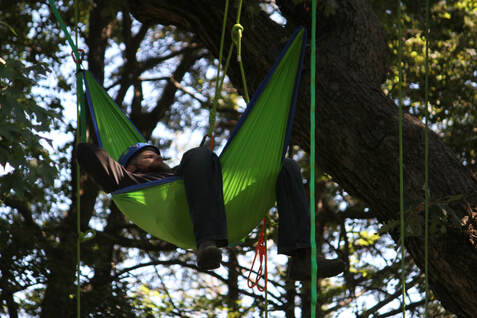
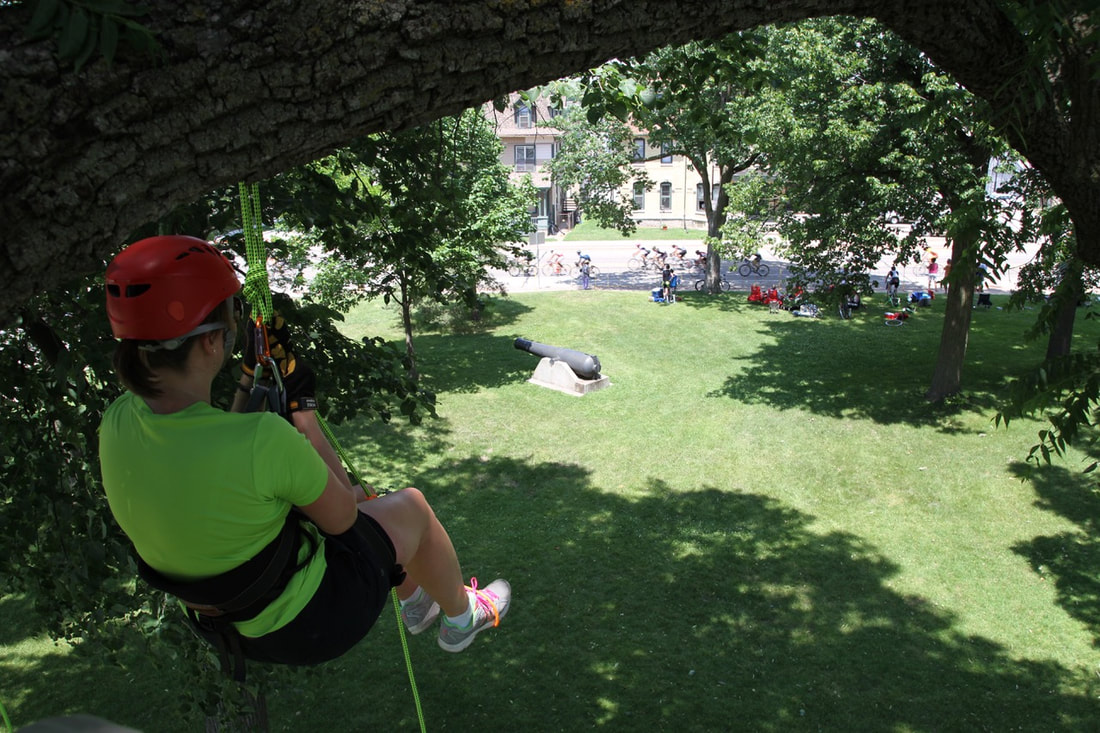
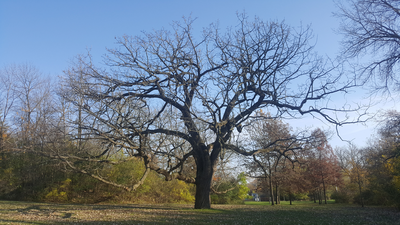
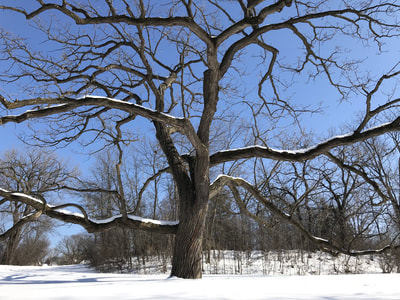
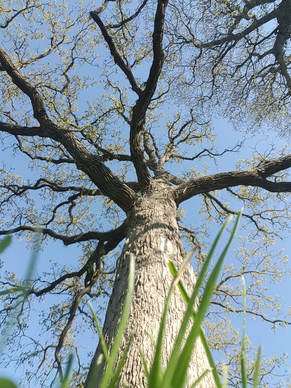
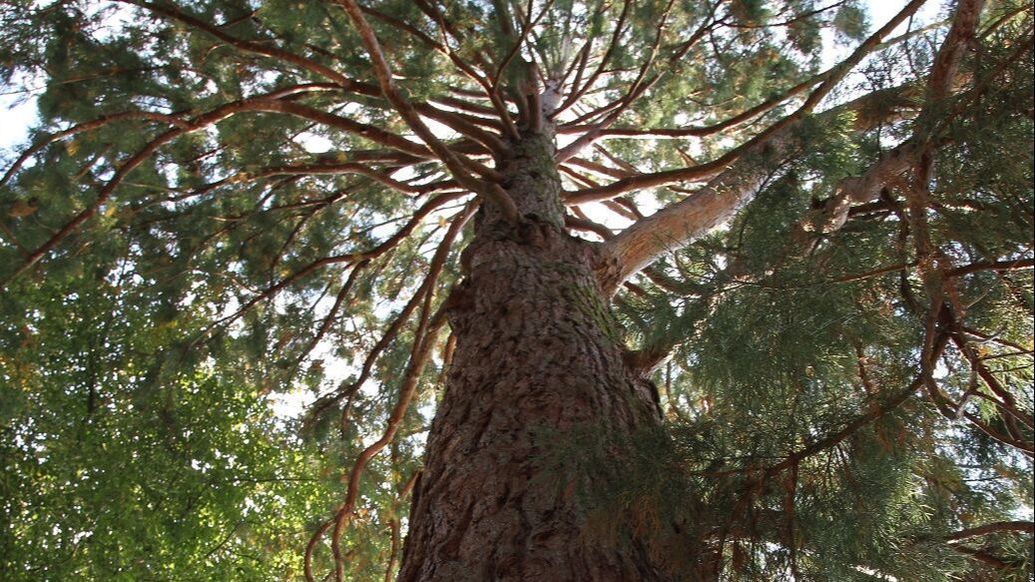
 RSS Feed
RSS Feed
